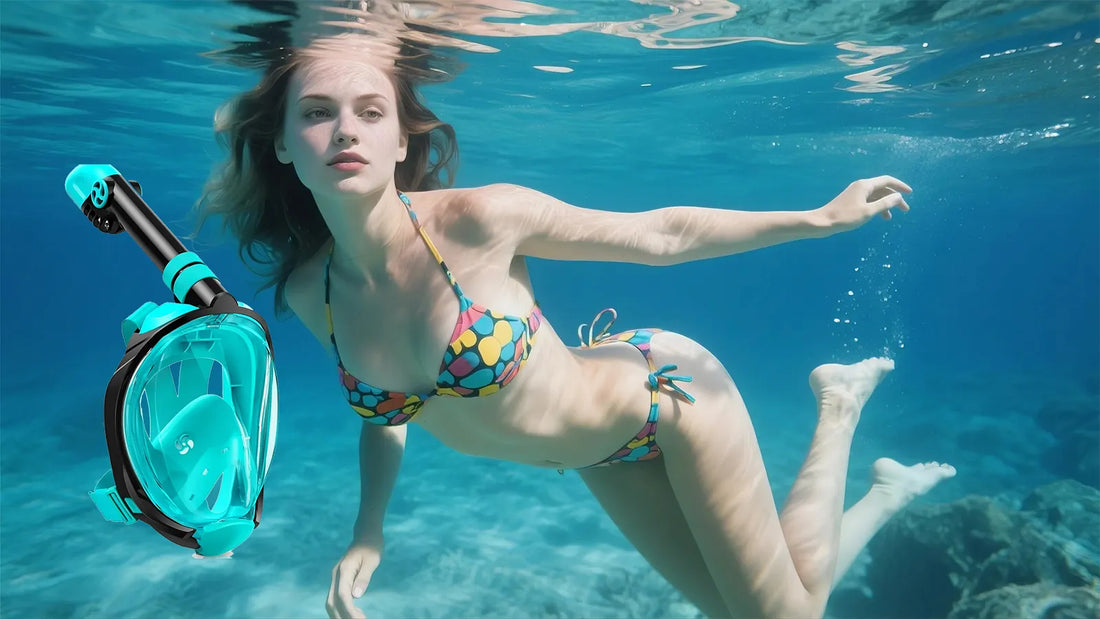Scuba diving is an exhilarating experience that allows you to explore the underwater world like never before. However, to ensure safety and comfort, having the right equipment is crucial. Whether you're a beginner or an experienced diver, understanding what gear is necessary can make all the difference in your underwater adventures.
The Essential Scuba Diving Equipment
Before diving into the depths, it's important to familiarize yourself with the essential equipment needed for scuba diving. Each piece of gear plays a vital role in ensuring your safety and enhancing your experience underwater.
1. Diving Mask
A diving mask is one of the most important pieces of equipment for scuba diving. It allows you to see clearly underwater by creating an air space in front of your eyes. When choosing a mask, ensure it fits snugly and comfortably on your face to prevent water from leaking in.
2. Snorkel
While not always necessary for scuba diving, a snorkel can be incredibly useful when swimming on the surface. It allows you to breathe without lifting your head out of the water, conserving energy and air in your tank.
3. Wetsuit or Drysuit
Depending on the water temperature, you'll need either a wetsuit or a drysuit. A wetsuit provides insulation by trapping a thin layer of water between your body and the suit, which your body then heats up. A drysuit, on the other hand, keeps you completely dry and is ideal for colder waters.
4. Buoyancy Control Device (BCD)
The BCD is a crucial piece of equipment that helps you maintain neutral buoyancy underwater. It allows you to ascend, descend, or hover at a specific depth by adjusting the amount of air in the device. A well-fitted BCD ensures comfort and control during your dive.
5. Scuba Tank
The scuba tank contains the compressed air you'll breathe underwater. It's essential to choose a tank that suits your diving needs, considering factors like size, material, and capacity. Always ensure your tank is properly filled and inspected before each dive.
6. Regulator
The regulator is the device that delivers air from your scuba tank to your mouth. It reduces the high-pressure air in the tank to a breathable level and includes a primary and secondary mouthpiece. A reliable regulator is vital for a safe and comfortable dive.
7. Fins
Fins provide the propulsion needed to move efficiently through the water. They come in various styles, including open-heel and full-foot fins. Choose fins that fit well and match your diving style to enhance your underwater mobility.
8. Weight System
To counteract the natural buoyancy of your body and equipment, a weight system is necessary. This can include weight belts or integrated weights in your BCD. Proper weighting ensures you can descend and maintain neutral buoyancy during your dive.
9. Dive Computer
A dive computer is an essential tool for monitoring your depth, dive time, and decompression limits. It helps you plan and execute your dive safely, reducing the risk of decompression sickness. Many dive computers also include additional features like air integration and navigation.
10. Accessories
In addition to the essential gear, there are several accessories that can enhance your scuba diving experience. These include dive lights, underwater cameras, dive knives, and surface markers. While not always necessary, these items can add convenience and safety to your dives.
Choosing the Right Equipment
Selecting the right scuba diving equipment is crucial for a safe and enjoyable experience. Here are some tips to help you make the best choices:
- Consider your diving environment and the type of dives you plan to undertake.
- Ensure all equipment fits properly and is comfortable to wear.
- Invest in high-quality gear from reputable manufacturers.
- Regularly inspect and maintain your equipment to ensure it remains in good condition.
- Take the time to familiarize yourself with your gear before diving.
Safety Tips for Scuba Diving
While having the right equipment is essential, following safety guidelines is equally important. Here are some key safety tips to keep in mind:
- Always dive with a buddy and maintain good communication underwater.
- Plan your dive and stick to your planned depth and time limits.
- Perform a pre-dive safety check to ensure all equipment is functioning correctly.
- Monitor your air supply and ascend with a sufficient reserve of air.
- Be aware of your surroundings and avoid touching marine life or disturbing the environment.
Scuba diving opens up a world of underwater wonders, but it's essential to be well-prepared with the right equipment and knowledge. By understanding what gear is needed and how to use it safely, you can enjoy unforgettable diving experiences while minimizing risks. So gear up, dive in, and explore the incredible beauty that lies beneath the surface!

